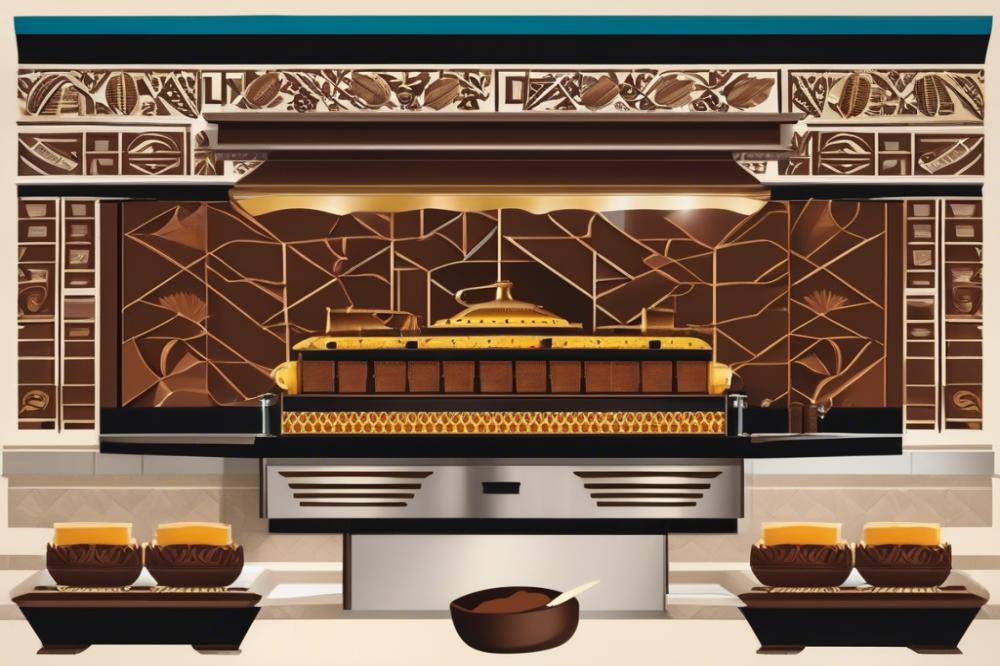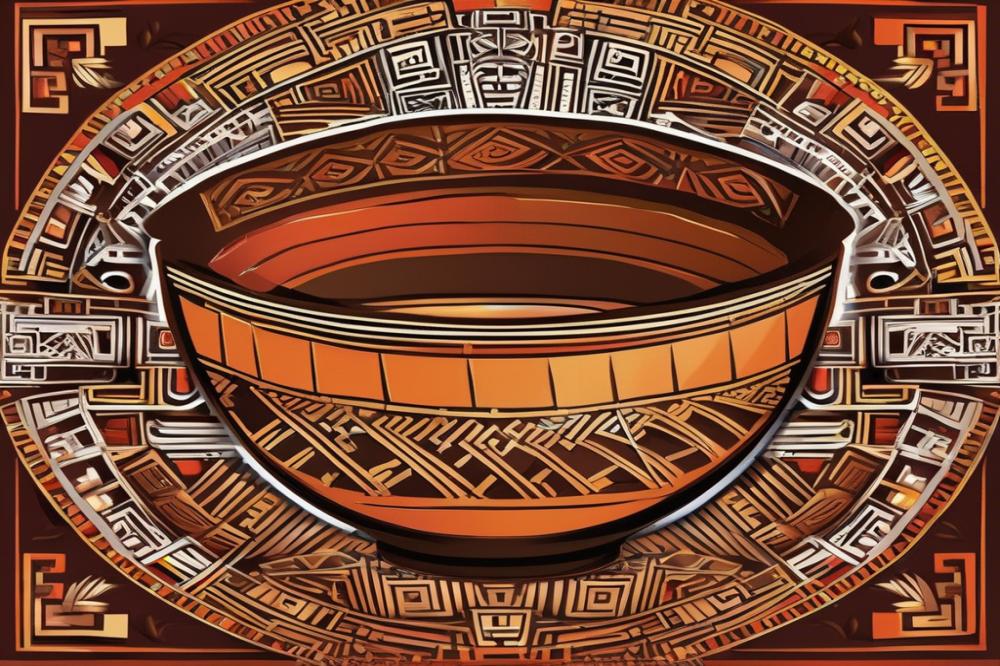The Impact of Modern Technology on Chocolate Production
Chocolate has been a treasured treat for centuries. Its history is rich, with roots tracing back to ancient Mesoamerican cultures. The Mayans and Aztecs believed cocoa beans held divine significance. For them, chocolate was more than a snack; it held religious and cultural importance. Over time, chocolate has evolved from a bitter beverage enjoyed by elites to the sweet confection loved by millions around the world. The journey of chocolate is fascinating, revealing much about human creativity and the evolution of food.
In recent years, modern technology has played a pivotal role in transforming chocolate production. Thanks to innovative methods, chocolate can now be produced more efficiently than ever before. New machinery, digital systems, and techniques have changed production lines in ways that enhance quality and speed. This evolution reflects the ongoing advances in science and engineering that reach across various industries.
Today, producers pay close attention to every step, from harvesting cocoa to the final product. Sophisticated equipment helps in maintaining consistency and flavor. The meticulous process of roasting, grinding, and refining now benefits from cutting-edge technology. Rooted in centuries-old traditions, chocolate has embraced modern advancements to meet rising demands. This blend of history and innovation makes chocolate production an exciting field to explore. Consumers can appreciate a product that is both traditional and contemporary.
The impact of technology does not just stop at production. It extends to marketing and distribution as well. Online platforms and social media allow chocolate makers to reach global audiences effortlessly. More than ever, people can access artisan chocolate brands and ethical choices with a simple click.
In this dynamic landscape where ancient practices meet modern methods, one thing remains clear. The evolution of chocolate is a testament to human ingenuity and cultural significance. Through the lens of technology, we see a new chapter in the sweet saga of cocoa. Exploring this transformation leads to an understanding of both our past and our future in chocolate production. To delve deeper into this topic, check out more details about the industry’s changes in techniques. For those curious about ethical practices, information on sustainable sourcing is also available.
Historical Context of Chocolate Production

Chocolate has a rich history that dates back to ancient Mesoamerican cultures. These groups, including the Aztecs and Mayans, used cacao beans to create a bitter drink. Unlike today’s sweet chocolate, this beverage was often flavored with spices or honey. It served various purposes, from religious rituals to social gatherings. The process was labor-intensive, requiring the grinding of cacao by hand.
As time went on, traditional practices faced a major transformation. The 19th century marked the beginning of chocolate’s journey into mass production. Innovations in technology played a critical role during this period. One of the key inventions was the chocolate press, which revolutionized how chocolate was produced. This machine separated cocoa solids from cocoa butter, making it easier to create a smoother product.
The introduction of conching also changed the game. This method involved continuously mixing chocolate to improve its texture and flavor. The result was a finer, creamier chocolate that became popular among consumers. As production processes modernized, chocolate became more accessible to the public. Factories began churning out bars and sweets on a large scale, changing the way people enjoyed this treat.
Significant developments in manufacturing techniques brought chocolate into homes worldwide. The shift from hand-crafted items to factory-made products made it easier to enjoy chocolate every day. This transition not only impacted how chocolate was produced but also how it was perceived. From sacred drink to common snack, chocolate’s evolution reflects broader changes in society.
Advancements in Machinery and Equipment

Modern chocolate production has undergone a significant transformation. New machines are redefining how we make chocolate. Innovative equipment offers speed and precision. This shift brings about a wave of improvements in efficiency and consistency.
Automation has taken center stage in factories. Robots now handle tasks that once required skilled workers. This technology allows for quicker production without sacrificing quality. With robots, chocolate can be made around the clock, increasing output. Consistency is critical in the food industry. Robotic systems provide uniform results batch after batch. Each chocolate piece is crafted with the same care, ensuring customer satisfaction.
Precision technology plays a vital role as well. This advanced equipment helps in refining flavor profiles. With precise temperature controls and mixing techniques, the taste of chocolate can be enhanced significantly. Different textures can also be achieved through careful processing. Accelerated cooling methods help maintain the best qualities of chocolate. Sophisticated machinery truly elevates the overall product.
Quality control has benefited from these advancements too. Advanced sensors detect any inconsistencies in the mixture. They monitor the chocolate’s viscosity and thickness in real time. Any deviation can be corrected instantly. Such accuracy helps avoid waste and maximizes production.
From small batch makers to large-scale producers, modern technology drives innovation. New machinery adapts easily to different recipes. This flexibility allows manufacturers to experiment with flavors. In turn, this leads to exciting new chocolate products hitting the shelves.
All these advancements reflect a broader change in the food industry. As companies embrace technology, the art of chocolate making evolves. Enthusiasts can now enjoy flavors and textures that were once unimaginable. Indeed, this shift in chocolate production showcases how technology can enhance a beloved product.
Impact on Sustainability and Sourcing

Modern technology significantly influences the way cacao is sourced. Digital platforms now connect farmers directly with buyers. This shift improves fair trade practices, making sure all parties benefit fairly. Blockchain technology enhances supply chain transparency. Buyers can track the origins of their cacao with ease.
Innovations in agricultural technology lead to better farming methods. For instance, precision farming helps farmers apply resources wisely. Using data analytics, they can monitor soil health and crop performance. This approach reduces waste and minimizes environmental impact.
Farmers are also adopting agroforestry techniques. These methods integrate cacao production with tree planting. This not only boosts biodiversity but also improves soil quality. As a result, the farming practices become more sustainable over time.
Mobile apps assist farmers in accessing critical information. They provide weather forecasts and market prices right on their phones. By receiving real-time updates, farmers can make informed decisions that enhance productivity. The combination of these tools empowers them to adapt to changing conditions.
Collaboration between technology companies and local farmers is essential. Promoting training programs helps educate farmers on sustainable practices. Increased knowledge leads to higher quality cacao and more resilient farming communities.
Many consumers are now more eco-conscious. They look for chocolate brands committed to sustainability. Technology facilitates this connection by giving consumers insights into the supply chain. Transparency builds trust and encourages ethical consumption.
Influence of Data Analytics and AI

Data analytics and artificial intelligence are transforming the chocolate production industry in remarkable ways. By harnessing data, chocolate makers can understand market trends better than ever before. Predictive analytics helps brands anticipate what consumers will want next. This ability to predict preferences leads to smarter decisions in product development.
For instance, companies can analyze historical sales data to forecast future trends. This insight allows them to launch flavors that align with consumer desires. With AI, manufacturers can identify patterns that may not be obvious through traditional methods. Understanding these patterns is essential for staying competitive.
Customization is another exciting area where AI shines. Through data analysis, chocolatiers can create products tailored to specific tastes. Imagine a chocolate bar made just for you, based on your purchase history and preferences. This level of personalization sets brands apart in a crowded market.
Additionally, machine learning algorithms can evaluate customer feedback in real-time. This immediate understanding of consumer reactions helps producers adjust their offerings quickly. For example, if a particular flavor receives poor reviews, production can pivot rapidly to something else. Quick adaptations can lead to increased customer satisfaction.
Moreover, AI technologies can optimize the supply chain for chocolate production. By analyzing various factors, such as ingredient availability and delivery schedules, companies can reduce waste and costs. Efficient operations lead to fresher products reaching consumers faster.
The marriage of data analytics and AI in #main_keyword# represents a revolutionary change. Chocolate producers can strategize more effectively, responding to consumer trends with precision. The benefits of these technologies lie not only in profit but also in creating an enjoyable experience for chocolate lovers everywhere. Imagine the possibilities as these innovations continue to unfold!
Future Trends in Chocolate Production
The world of chocolate is on the brink of exciting transformations. Numerous technological advancements promise to change how chocolate is made. Innovations in farming techniques could improve cocoa bean quality drastically. Advanced monitoring systems may help farmers track crop health with precision.
Artificial intelligence might play a crucial role in quality control during processing. Smart machines can analyze chocolate for consistency more effectively than human eyes. These technologies will likely help brands create flavors that customers crave. Data analytics can reveal trends in consumer preferences, leading to tailored products.
Additionally, 3D printing presents a fascinating opportunity. Imagine chocolates crafted in personalized shapes and designs. Customization could elevate the gifting experience, attracting more buyers. Customers may soon choose their flavors and shapes online, and have them printed to order.
Sustainability remains a significant focus. Technologies that reduce waste in chocolate production are gaining attention. Eco-friendly practices not only appeal to consumers but also help the planet. Blockchain technology may also become important for tracing cocoa origins, ensuring ethical practices.
Challenges exist in implementing these new tools. Some manufacturers may struggle to afford such advanced technologies. Training staff to use modern systems can also present hurdles. Yet, the potential benefits outweigh difficulties that may arise.
Opportunities for collaboration are increasing. Partnerships between tech companies and chocolate producers can lead to new innovations. Together, they can develop solutions that address both productivity and sustainability. The future indeed looks bright for chocolate production.
The Future of Chocolate Production in a Tech-Driven World
Modern technology has profoundly influenced the chocolate industry. We discussed advancements in machinery, from refining processes to innovate farming techniques. Robotics and automation help produce chocolate more efficiently while maintaining quality. This transformation offers benefits like increased production and reduced costs. It also helps in tracking sustainability efforts within the supply chain.
While technology enhances production, it raises questions about traditional methods. Craft chocolate makers emphasize that certain ancient practices cannot be replaced. Intuition, skill, and craftsmanship are vital elements that convey the rich history of chocolate. Innovations must complement these traditions, not overshadow them. Balancing old and new methods can lead to positive outcomes for producers and consumers alike.
The future of chocolate will likely embrace both technology and artisan practices. Companies can use data analytics to understand consumer preferences better. This approach enables firms to create flavors and products that resonate with modern tastes. Still, the story behind chocolate—the journey from bean to bar—remains important. It connects us to the farmers who cultivate cacao with care and passion.
As we look ahead, the chocolate industry must navigate this complex landscape. The blend of technology and tradition offers exciting possibilities. Increased innovation could lead to more sustainable practices and unique flavor experiences. Meanwhile, the essence of chocolate as a beloved treat will endure. Engaging with consumers and promoting ethical production will be vital. Ultimately, the chocolate industry’s direction will depend on how well it embraces change while honoring its roots. The choices we make now will shape chocolate’s future in a tech-driven world. #anchor_text_3# reflects this journey, reminding us of the importance of balance. Embracing this journey may bring wonders ahead. #anchor_text_4# highlights that the heart of chocolate production remains as sweet as ever.



